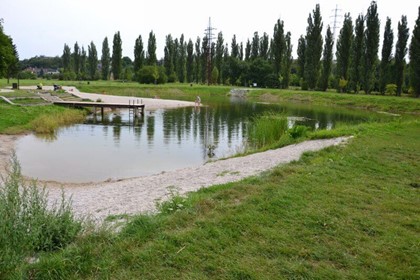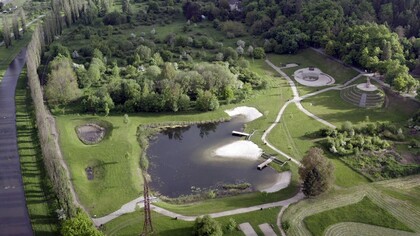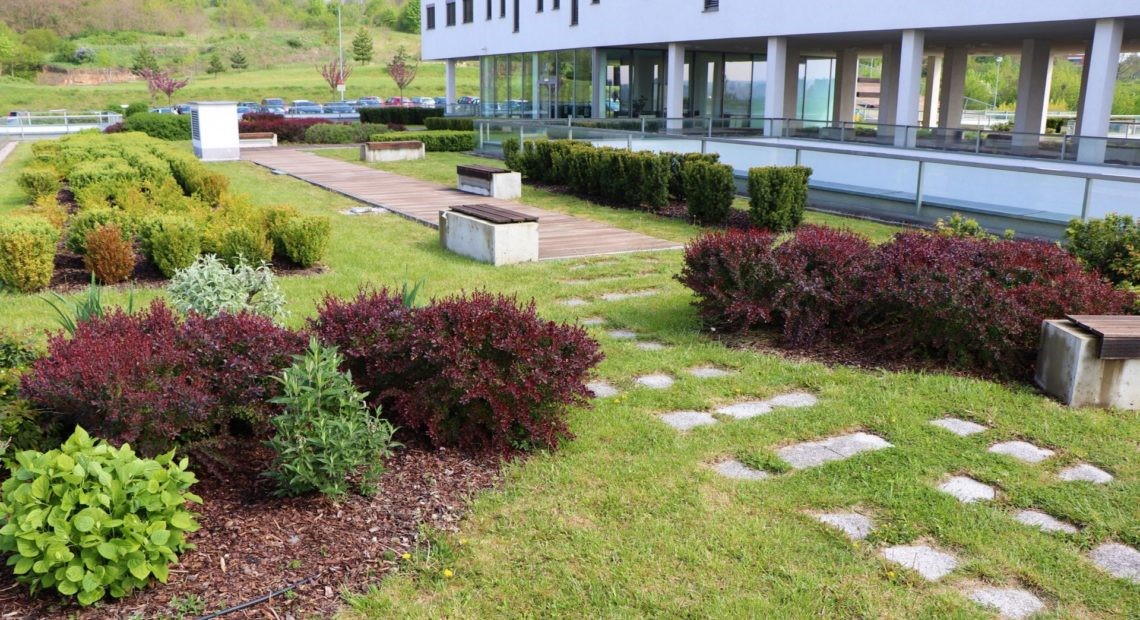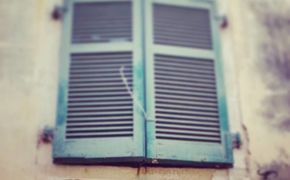The rise of heavy precipitation and extreme coastal water levels have increased the risk of river and coastal flooding in many European regions, which have been experiencing these events with increasing intensity over the past decades. Health complications, death, disruption of services, destruction of infrastructure and housing, or access to clean water are some of the impacts flooding has had on millions of European citizens since 2000. “If no adaptation measures were taken, the number of people affected by coastal flooding in the EU at the end of the 21st century would range from 775 000 to 5.5 million people annually” (European Environment Agency, 2021).
Restoration supports rivers’ natural capacity to retain water and thus contributes to flood risk management. However, only around 40 % of the 110,000 bodies of surface water in the EU (i.e. rivers, lakes and transitional and coastal waters) are currently in good ecological shape, according to the European Environmental Agency (EEA). In the past, floods were usually mitigated by constraining the watercourse, building dikes, straightening rivers to increase discharge and building artificial retention areas. The new approach is based around natural restoration, and works with the recreation of meanders, wetlands, floodplains, and natural storage areas in the landscape. The method is in alignment with the EU Floods Directive, the Water Framework Directive and the Birds and Habitats Directives.
Nature-based solutions are considered a key component of several European strategies. The EU’s 2030 biodiversity strategy, a key pillar of the European Green Deal, includes a nature restoration plan that can boost the uptake of such solutions. Nature-based solutions are also highlighted in the EU strategy on climate change mitigation and adaptation that was recently adopted by the European Commission. Adaptive solutions can take many forms, aside from the aforementioned flood mitigating river basin restoration, from green roofs and city-cooling green spaces to the planting of vegetation that stores carbon and stabilises coastlines.
The integration of nature-based solutions into municipal strategies is a pre-requisite for the effective restoration of rivers. A good practice presented in the EURE project highlights an approach from the Czech Republic that focused on environmental quality and environmental management efficiency of EU urban areas.
The Lobzy Park
One example of a successful revitalisation project is the Lobzy park in the city of Pilsen. Pilsen took part in the REURIS project from Interreg Central Europe, which provided financial resources for the preparation revitalisation of European rivers. The Urban Planning and Development Institute of the City of Pilsen (ÚKRMP) initiated a study to identify the most suitable areas around the banks of their four rivers. Priority was given to flood risk management, but other aspects such as recreation potential were considered as well.
The Lobzy park lies on the river Úslava, which is the liveliest river in Pilsen, therefore having the highest flooding potential. The Lobzy park was developed in 1935 in a former sandstone quarry, but became abandoned after World War II. The place had already been used for recreational purposes by citizens living in adjacent neighbourhoods, and the proposed revitalisation provided a good opportunity for an expansion and a revamp of the existing area. Four ponds were developed, serving as natural retention points, recreational pools as well as habitats for local fauna and flora.

Lobzy park in Pilsen, retention pond
A shift in mindset
“When we first put the idea on the table in 2008, nature-based solutions were far from being commonly used, at least in the Czech Republic,” says Eva Velebná Brejchová from ÚKRMP. The first step was integrating the approach in the city’s strategic development plan. This proved to be not an easy task, requiring a lot of time, many discussions with all relevant stakeholders, and much determination from the people who believed in the concept. “Having allies among city officials and being able to hold fact-based discussions was a major help”. As was the fact that there is an overlap between river restoration, life quality improvement and recreation site development: “The purpose of revitalisation is not only about flood prevention, but also about making rivers more integrated in the life of the city” explains Eva. Integrated revitalisation in urban areas is oriented both towards the improvement of natural habitats in river valleys, and the improvement of the cultural landscape and public access.
Luckily, there were several supporting factors in place that made the realisation of the Lobzy park possible. The likelihood of the project becoming a popular recreation destination for locals and tourists alike was high. The area in question was located on a municipality-owned property. There was financial support available from the EU funds and the district’s mayor was hugely supportive. According to Velebná Brejchová, this was a very important piece of the puzzle. “The mayor really wanted to make this happen, was able to obtain the financial resources and managed to negotiate conditions that made all stakeholders content. His involvement was key, because it’s hard for projects to pan out without political will”.

Aerial view of Lobzy park in Pilsen
On the way to becoming a green city
The Lobzy park can be viewed as a success story, a project which showed that nature-based solutions work. In a way, it has set a precedent that Pilsen still follows today. In 2017, an adaptation strategy was created and has since been integrated in the Strategic plan of the City of Pilsen. Climate change adaptation measures are now a consideration embedded in every new development project. The restoration of rivers and riverbanks remains an important topic, with new projects being constantly developed and planned. Some of these include a second phase of the Lobzy park project, the realisation of flood management and a sports area on the Bozkovský island, the restoration of wetlands and ponds, as well as the riverbank restoration at the river Mže.
Pilsen has many other nature-based adaptation projects located on green roofs, incorporating green infrastructure and rainwater management. The implementation of green roofs and rainwater retention is always considered in the reconstruction of public buildings. All newly built parking houses, for example, are equipped with these features. Some examples of recent projects include a complex public space revitalisation at Jiráskovo náměstí (town square), or a green roof at a local elementary school serving as an inspiring learning space. Special sensors were placed on the roof to take various measurements, providing tangible evidence of the green infrastructure’s effects. Restoration is also underway around the central train station, with focus on greening of the area and on rainwater retention. Furthermore, there is Depo Slovany, a larger project involving the modernisation of a tramway line terminal and development of an administrative building, where the country’s biggest green roof will be created.

Green roof on top of a hospital in Pilsen
For municipalities interested in the implementation of blue/green infrastructure and nature-based adaptation solutions, Eva Velebná Brejchová has the following advice: “It is important to always consider the project in the context of the city, instead of treating it as an isolated matter. In this manner, it is easier to find synergies between subjects such as water, green spaces, recreation or transport, and often kill two or three birds with one stone. It’s always about people and very often also about money” adds Eva. “Finding people who are personally invested into and passionate about the project helps with its realisation. You don’t always have to (or are able to) do everything at once, sometimes it is necessary to divide the project into smaller chunks, show that it is possible and gain public support to raise funds for the rest.”
For more inspiration and information on nature-based adaptation projects and river restoration:
- Read more about the Lobzy park in Pilsen.
- Watch a video about the project.
- Guide for Urban River Revitalisation.
- Pilsen’s Green Blue Infrastructure Guide.
- Finished projects in Pilsen.
- Explore the Interreg Europe Policy Briefs on Rivers and wetlands: drivers of sustainable regional development and on ‘Urban eco-systems’.
- Watch the recordings of the workshop on ‘Living rivers: a driver for sustainable regional development’ and of Working Group 1 ‘Eco-systems services and river restoration’.
- Read about a good practice from Sweden on innovative bike and pedestrian connection generating ecosystem services.
- Read the story on ‘Daylighting rivers’.









